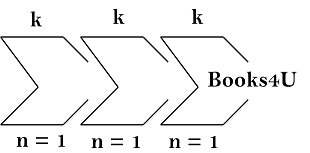SIGNAL VARIATION
>> It is the maximum or peak change in the value of voltage and current with respect to DC value.
>> Based upon the value of signal variation, amplifier can be divided into two types.
(i). Small Signal Amplifier (ii). Large Signal Amplifier
SMALL SIGNAL AMPLIFIER
>> An amplifier in which signal variation is much smaller than DC value.

Let DC value (IB) = 20 μA
And ib = 2 Sin (ωt) μA
⇒ iB = IB + ib
⇒ ΔiB = ± 2 μA (Signal variation)
Signal Variation is very small in comparison to DC value.
>> In small signal amplifier, BJT exhibits piecewise linearity or behaves as a linear
element, due to which output signal will be distortion less.
>> Small Signal amplifier is used as a voltage amplifier.
LARGE SIGNAL AMPLIFIER
- An amplifier in which signal variation is large or close to DC value.
Let DC value (IB) = 20 μA
And ib = 18 Sin (ωt) μA
⇒ iB = IB + ib
⇒ ΔiB = ± 18 μA (Signal variation)
Signal Variation is very close to DC value.
- BJT behaves as a non-linear element because β does not remain fixed for large input signal.
- Due to which equal change in base current does not produce proportionally equal change in collector current.
